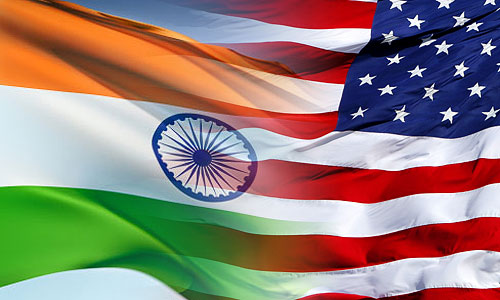
India Photo : Finlace Consulting
For centuries India had been ruled by several rulers. Each of them had their own style of governing the people. There are various figures for the number of democratic countries, due to varying criteria. The democracy in USA has always interested me due to its contradictions and ironies. The same is true about India. So, lets compare the two largest democracies.
- Freedom of Expression : USA has a very high rank in the various indexes of political and civil rights. Organizations of varying ideology from fascism to communism exist in USA. The burning of the American flag has been considered as a legitimate expression of one’s opinion in a Supreme Court precedent. During the US war with Iraq, Libya and other countries, several far-left groups in USA supported enemy countries without any sedition charge. Similarly, during the standoff with North Korea in 2017, WWP among other organizations supported North Korea openly. India, too has high levels of freedom of expression. However, support to foreign countries, rebellion groups and disrespect to the national flag are punished with sedition cases and even imprisonment. There have been some incidents of thrashing and beating up of political opponents in India, and assassination of journalists.
- Judicial Freedom : In USA, the President controls the selection process for the Supreme Court and other higher court judges. This political control has created an incentive to disregard politically neutral candidates and get as many sympathizers as possible into the top brass. All the SC judges are openly political and should another government come, try to hamper it. India, has an apolitical process via the Collegium, and judges are rarely politically affiliated. So India has a more independent judiciary.
- Religious Fundamentalism : It is undeniable that religion-based rhetoric is a card used in Indian politics far too often. Some leaders in our present ruling party too have given hateful speeches against one minority community, and are suspected to have abated riots. The level of violence is not present in USA, but the ideology is. The Republican Party, which is by all means the right-wing Christian party has a faction that is labeled as the American Taliban. Followers within the GOP include Ann Coulter, Henry Morris, David Trosch etc. that expound Biblical literalism and homophobia, and violence against minorities and the atheist communities. In some areas of USA, the atheist minority is disallowed from contesting elections. The belief in Biblical literalism has created the anti-evolutionist movement that are trying to stop the teaching of evolutionary biology. They have succeeded in sabotaging scientific education in Republican ruled states. We also see a trend in India of pushing technology into mythology, denying science and making hand-wave comments about evolution in the Indian Science Congress and comments by ministers.
- Racism : At one time there were hundreds of thousands of black salves in USA, that were raped, tortured and abused by their owners. Abraham Lincoln put an end to it, and the federal government fought a war against the secessionist Southern states that wanted to defend this horrendous institution. The victory of USA against CSA, was a victory of humanity. However, many whites in those Southern states seem to disagree. Statues to slave owning generals like Robert Lee have been erected. The state of Virginia even passed a bill against one town that demolished a statue. Meanwhile, the myth of the Lost Cause of the South a pro-CSA perspective of the war has been put forward, that disregards the true issues. Organizations like KKK (Ku Klux Klan), American Nazi Party etc. are spreading hate according to skin color and trying to push forward the far-right in the Republican Party. The democracy and law-and-order situation in the land of the free, is really threatened by these wannabe terrorists.
- Federalism and the Freedom of the State : Both USA and India share a federal structure. India’ federal structure is derived from its Constituent Assembly which gave some rights to the state governments. And most issues fell in the joint list. Laws can be made by states, but concerning the Penal Code, no major change can happen. However, the US states are extremely independent. They can have their own penal code. Some states allow capital punishment , some have abolished it. Some states allow corporeal punishment, some have abolished it. In some states, neutral science can be taught. In other states, only what is acceptable to Christians can be taught. In clear violation of the US Constitution, in some states atheists cannot fight elections.
- Power of the Parliament : India has two positions, Prime Minister and President (the latter largely ceremonious, can only work under recommendation.) The Prime Minister holds great real-life power, however as one person he has no power to order anything. He is the chief of the Cabinet and a member of the Parliament, and only the Parliament can pass laws. Meanwhile, no power can veto the Parliament, except the Hono’able Supreme Court. On the other hand, the US President has extensive powers. He can block any decision of the Parliament, rule by decree and is not a member of the Parliament. In fact, USA could easily have become a dictatorship with such an overpowered Presidency.
Author Bio : Aniruddha Aloke, a participant of Monthly Essay Competition, April, 2019.


